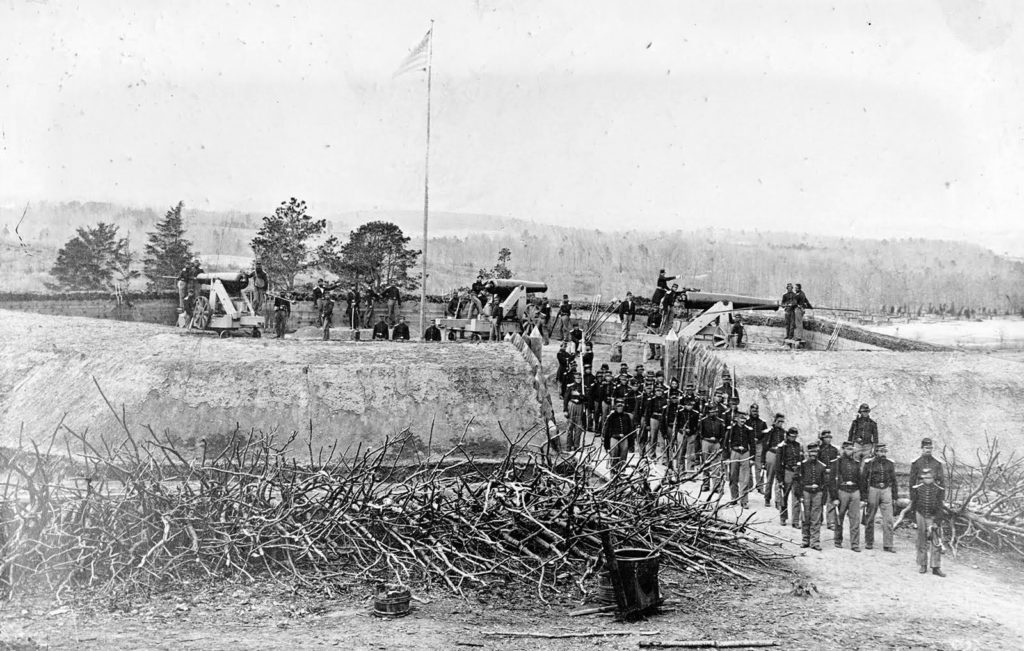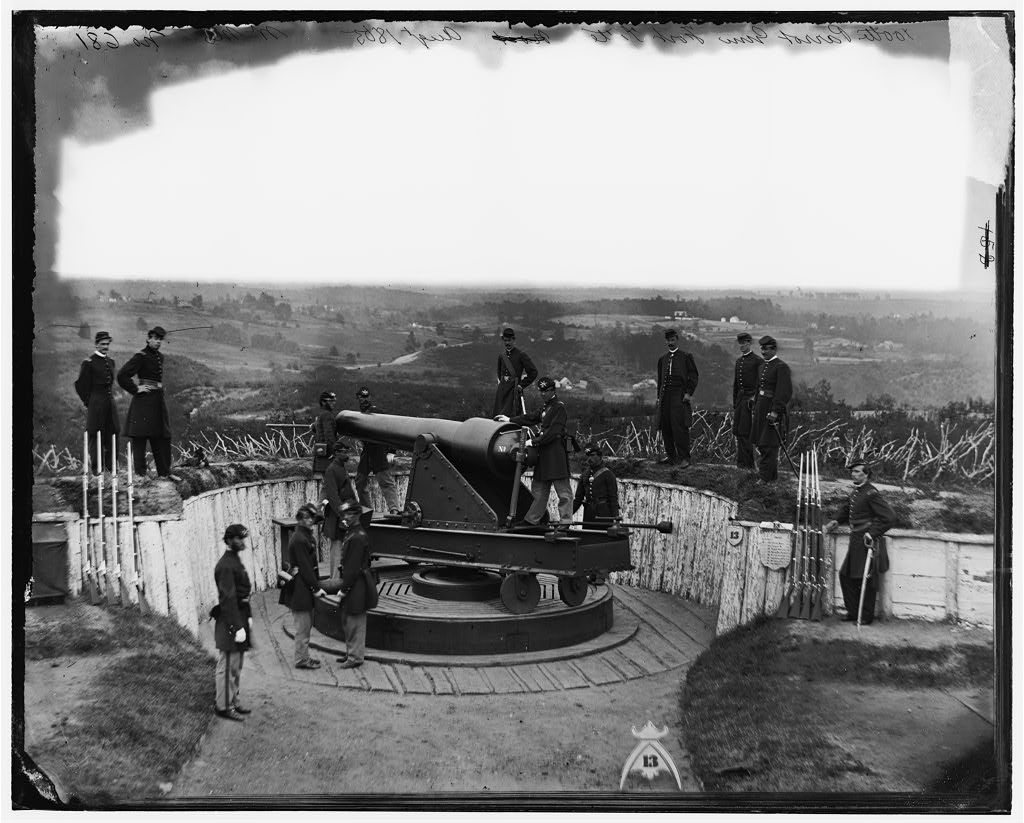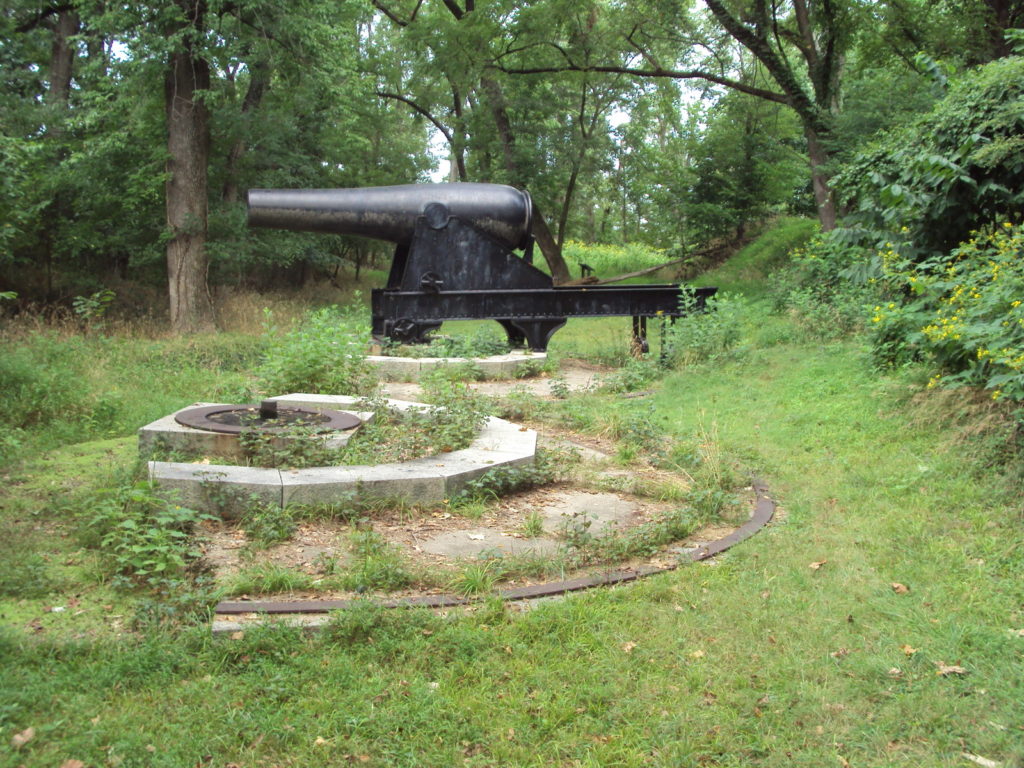Have you ever looked at a map and wondered about Washington DC during the Civil War? I mean, the place is surrounded by states that seceded from the Union! Maryland to the north and east, Virginia to the south and west. But the Federal government remained in Washington DC instead of withdrawing north. One reason the government stayed in place was the Civil War Defenses of Washington DC, now part of the National Park system.
 By 1863, 68 forts with 900 cannon surrounded the city of Washington DC, making it the most heavily fortified city in the United States. These forts were manned by 23,000 troops and allowed the city to feel protected. Robert E. Lee knew that taking Washington DC would strike a severe blow to the Federal Forces. When he attacked Grant at Richmond, most of the troops in Washington DC left to support Grant. In response, Robert E Lee sent Confederate General Jubal Early and 14,000 men to attack the green recruits left behind in DC.
By 1863, 68 forts with 900 cannon surrounded the city of Washington DC, making it the most heavily fortified city in the United States. These forts were manned by 23,000 troops and allowed the city to feel protected. Robert E. Lee knew that taking Washington DC would strike a severe blow to the Federal Forces. When he attacked Grant at Richmond, most of the troops in Washington DC left to support Grant. In response, Robert E Lee sent Confederate General Jubal Early and 14,000 men to attack the green recruits left behind in DC.
 The Confederate troops got within six miles of Washington DC before being delayed at the Monocacy River. The Union troops of Fort Reno, For DeRussy, Fort Slocum, and Fort Stevens knew it was a losing battle, but they were charged with slowing the Confederates enough to allow additional troops to move back into DC. After holding ground for two days, the Union troops retreated back to their forts and the delay worked. Knowing they were now hopelessly outnumbered, the Confederate troops moved south once again.
The Confederate troops got within six miles of Washington DC before being delayed at the Monocacy River. The Union troops of Fort Reno, For DeRussy, Fort Slocum, and Fort Stevens knew it was a losing battle, but they were charged with slowing the Confederates enough to allow additional troops to move back into DC. After holding ground for two days, the Union troops retreated back to their forts and the delay worked. Knowing they were now hopelessly outnumbered, the Confederate troops moved south once again.
Today 19 of the Civil War Defenses sites are preserved as parks, part of the National Park service. Where soldiers once drilled and canons protected the city, people can walk in the woods and ride their bikes. The best preserved earthworks are visible at Fort Marcy. Fort Ward Museum and Historic Site has preserved, restored, and reconstructed earthworks. It is administered by the city of Alexandria, Virginia. Battleground National Cemetery has the graves of the Union soldiers who fought and died in the Battle for Fort Stevens. Fort Dupont has an amphitheater and offers concerts in the summer.
 It is interesting to visit the Civil Defenses of Washington and imagine the ring of forts surrounding the city. It would have felt like a city under siege, although the Confederates were never able to cut it off.
It is interesting to visit the Civil Defenses of Washington and imagine the ring of forts surrounding the city. It would have felt like a city under siege, although the Confederates were never able to cut it off.
